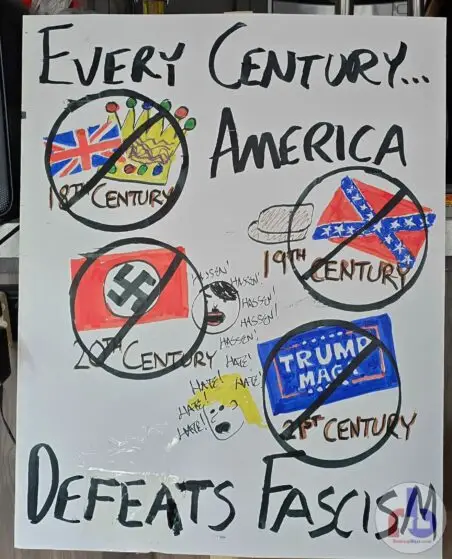 I’m not sure what part of this case bugs me more:
I’m not sure what part of this case bugs me more:
- That ad agency executives for Ogilvy & Mather falsified billing records to the ONDCP (Office of National Drug Control Policy), or
- That the ONDCP exists in the first place, wasting money on ridiculous commercials that even they admit do not work.
Here’s the story:
(AdWeek) NEW YORK — Former Ogilvy & Mather executive Shona Seifert today was sentenced in U.S. District Court here to 18 months imprisonment (and two years probation) for her role in a scheme to overbill the government’s $1 billion Office of National Drug Control Policy account to cover a $3 million revenue shortfall on the business.
Seifert must also pay a $125,000 fine and a $1,000 special assessment, as well as write a “code of ethics” for the ad industry as part of 400 hours of community service.
One blogger who focuses on the advertising industry noted that “…Ogilvy was allegedly falsifying time and billing sheets with a client – the Office of National Drug Control. Shona Seiffert, one of the Ogilvy folks on the hot seat has been caught red-handed by an FBI handwriting expert directing an underling to “put Huggies and Wings time on ONDCP”. Ain’t it nice to know that federal taxpayer money helped to fund commercials for diapers and feminine pads?
Even without this scandal, the commercials that Ogilvy was producing for ONDCP are shameful enough. I’ll bet you’ve even seen a few of these:
Ghosts — people who once bought drugs are haunted by phantoms who were innocent victims of violence in the drug trade. In the 30-second spot “Subway,” a man riding on the New York subway late at night is approached by ghosts who say, “You killed us.” “What?” the startled man replies. “I was on my way home riding my bike,” a ghost says. “You beat me to death.” “You slit my throat,” another ghost says. “It was your money.” [Say, if there were a legal way to acquire drugs, nobody would have to be killed, right? Or if I could grow my own legal marijuana plant, there’d be no drug trade, right?]
Drugs Support Terrorism — The drugs-and-terror campaign first broke five months after the Sept. 11 attacks, with two Super Bowl ads that cost the drug office more than $3 million to run. The spots centered on the idea that people who purchase drugs help fund terrorism. One ad showed a shopping list that includes an AK-47 rifle. “Where do terrorists get their money?” said the voice-over. “If you buy drugs, some of it might come from you.” Later ads replaced “terrorism” with “terror,” suggesting drug buys supported drug-cartel attacks on innocent civilians. [Which is not an issue if you’re growing or buying domestic marijuana, right? Not to mention that terrorism is largely funded by countries who’d rather sell us oil than drugs.]
Help a Friend — The second 30-second ad, produced by Ogilvy & Mather and set to run on Survivor, is “targeted at friends of teens who drink and use drugs.” It deals with “the responsibility a friend or loved one has toward someone who has a drug or drinking problem. The spot depicts “what would happen in a lake where you might have a responsibility to do something.” [The other ad in this series is a teen who ignores his friend struggling to get up off a busy road after being hit by a car.] [And wouldn’t it be harder to help that friend in the lake or in the street if the police were arresting them for drowning or getting hit by a car?]
Connect the Dots — The commercials, “Stacey” and “Dan,” trace a marijuana purchase to a horrible end. Copy reads, “This is Stacey. This is the dime bag that Stacey bought. This is the dealer who sold the dime bag that Stacey bought. This is the supplier who smuggled the pot to the dealer who sold the dime bag that Stacey bought. This is Carla hit by a stray bullet from Stacey’s supplier and paralyzed for life.” Tagline: “Responsibility is a bitch, isn’t it, Stacey?” In “Dan,” the purchase is traced to a drug cartel and an innocent family is shot. [Gosh, it sounds like innocent people get traumatized by violence when we let criminals control the drug trade.]
Yeah, you remember those ads, during the Super Bowl, during Survivor, during most of the prime time shows. That must cost a lot of money. I sure hope that was money well spent…
The five-year-old antidrug program is unusual among public-health advertising because it is funded largely by taxpayers — $929 million so far — rather than nonprofit groups or public service spots that media outlets run free of charge. Moreover, Congress enacted an unusual law requiring TV networks, cable outlets, magazines and other media to donate an equal amount of ad space for each ad purchase, effectively doubling the impact of the government dollars.
[Drug Czar John] Walters is attempting to spin some otherwise gloomy news. His office this week intends to release an evaluation of the campaign showing there’s little evidence it has had direct favorable effects on youth between 2000 and 2001. In fact, some kids who saw the ads, particularly girls aged 12 to 13 who didn’t already use drugs, said they were slightly more likely to smoke pot after seeing the commercials. That finding might be a statistical anomaly.
“This campaign isn’t reducing drug use,” said Mr. Walters, who became head of the U.S. Office of National Drug Control Policy earlier this year. Mr. Walters was openly critical of the ads even before taking office, and argued that the advertising effort was in dire need of an overhaul.
$929 million dollars of our money, a portion of which was scammed by Ogilvy, and the rest that was spent on prohibitionist propaganda that didn’t change anyone’s drug use one bit. Meanwhile, Milton Friedman and 500 economists remind us that we could reap a $14 billion dollar windfall by merely decriminalizing, regulating, and taxing marijuana.
Hey, a billion here, a billion there… pretty soon you’re talking about some real money!






